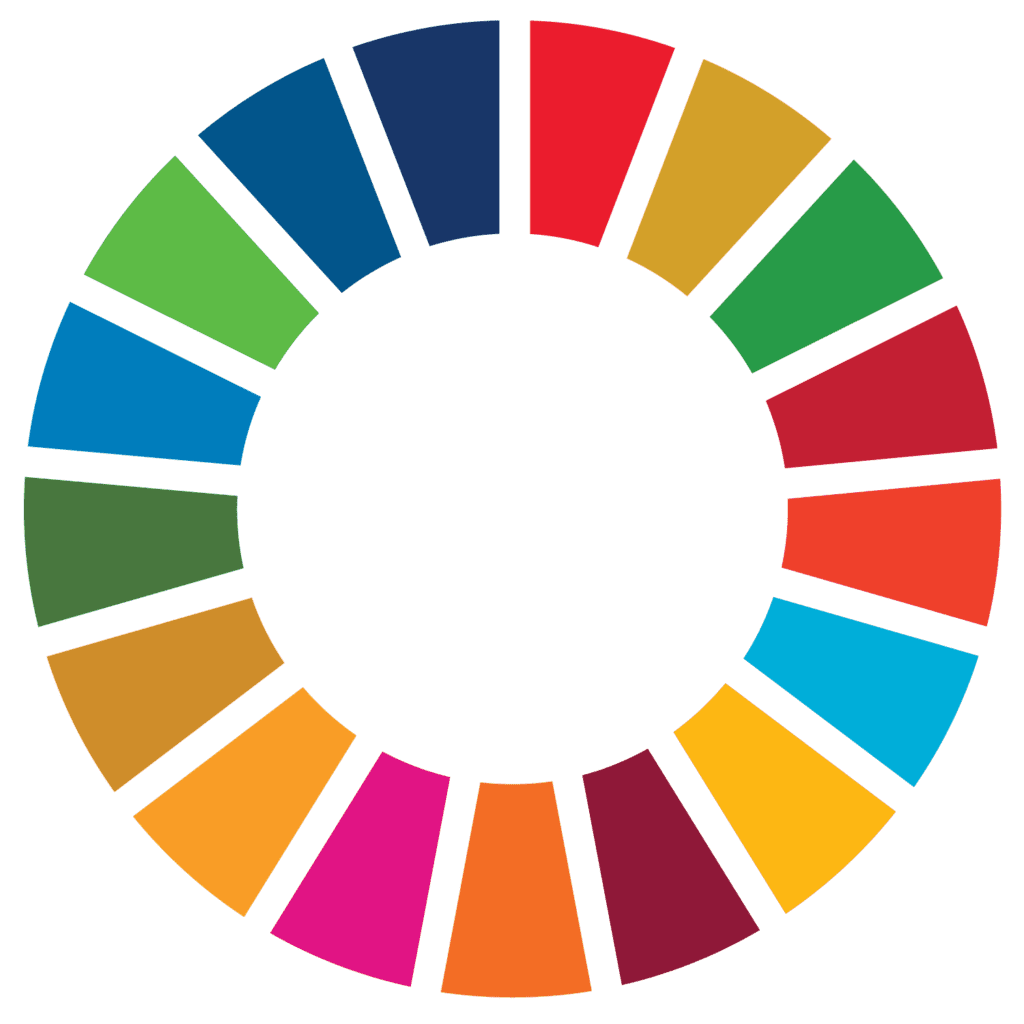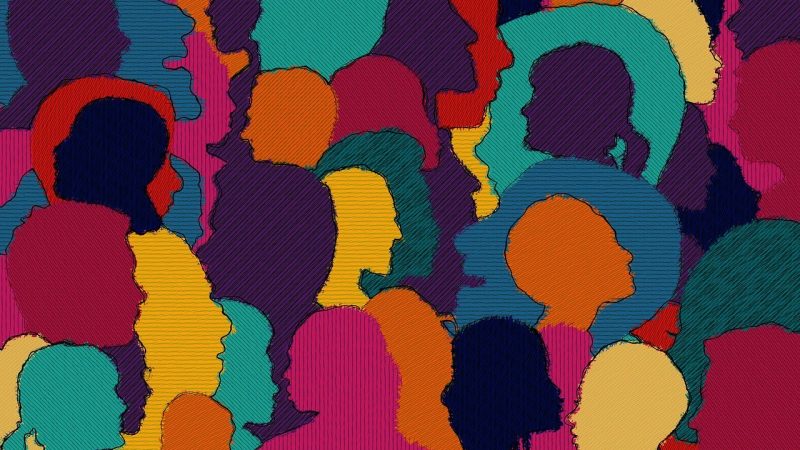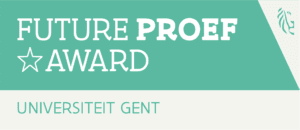The two sides of racism: the advantaged and the disadvantaged


Painting the Picture
Liu’s thesis focuses on social sustainability, exploring how racism in Europe impacts both the minority and the majority. To move together towards a more just and sustainable future for all, we must look closely at our current societies, including the uncomfortable topics. A sustainable future is only possible if everyone is included in its narrative – highlighting the importance of understanding minorities’ perspectives with empathy and initiating a constructive conversation on racism in Europe. Acknowledging that both minorities and majorities are included in the dialogue on racism is therefore essential to start bridging gaps in racial knowledge.
Using Critical Race Theory (CRT) as a theoretical framework that stipulates racism is a normal, rather than abnormal, part of society – Liu investigates this phenomenon within Flemish internationalisation, stimulating a ‘mini-diverse society’. She asked students who identify as racial-ethnic minorities as well as those who identify as racial-ethnic majorities how they: perceive race and racism; make sense of how we talk about these topics, and how this impacts experiences of race and racism. This is a missing piece of the picture of race and racism in Europe’s history and society.
 Foto: PublicDomainPictures via Pixabay
Foto: PublicDomainPictures via Pixabay
Contrasting Ideas of European Progressiveness
Europe as being progressive was a recurring theme amongst minority and majority groups. However, the groups perceived the idea very differently. Those of the majority group tended to view European progressiveness abstractly, referring to broad notions of open-mindedness, social/cultural progressiveness, liberalism, and tolerance.
“I think today, especially as Europe is very diverse and multicultural, it kind of has to be progressive – socially at least.” (Kai, Majority Participant)
In contrast, Liu noticed that the minority group did not uphold these ideas of European progressiveness. Although they initially cited believing in these concepts, after having lived in Europe themselves, minority participants began questioning this idea. What follows are some of the minorities’ experiences and observations of how Europe is. They found that Europe is in some ways quite conservative in its approach to immigration, and that there is resistance against diversity (including race, ethnicity, immigration, sexuality, gender, etc.). They also noticed the omission of ‘race’ in public dialogue, and are questioning the narrative of an inclusive society due to their own experiences with racism, which leads them to challenge mainstream notions of European progressiveness.
“It tries to portray itself as inclusive. Accepting. Melting pot...I think European values are pretty conservative. They like the way it is, or it was, and it kind of tried to maintain that culture.” (Bailey, Minority Participant)
 Foto: Ohmydearlife via Pixabay
Foto: Ohmydearlife via Pixabay
Misaligning Perceptions of Anti-racism
One key argument that Liu highlights in her thesis is the lack of a framework in Europe to address racism and, consequently, anti-racism. With the elimination of ‘race’ from European public dialogue, there is no dominant model to follow when discussing race, and thus no common understanding of race and racism. As such, misaligning ideas of racism and anti-racism were evident between the two groups. This divergence hinders progress towards constructive anti-racist efforts – where actions of anti-racism by the majority may not benefit those they are fighting for, the minority.
“I do think progressive circles that are anti-racism and whatever, I think these people tend to overlook how they can be racist, and they can be discriminatory and micro-aggressive in their own ways.” (Ollie, Minority participant)
When it comes to issues of anti-racism from the perspectives of the majority: many acknowledged their Whiteness, but some disidentified with it. However, disidentification does not eliminate the privileges they have, especially without accompanying structural changes. ‘Opting out’ of a White identity does not automatically relinquish White privileges, and so anti-racist attempts to identify with the oppressed are perceived as disingenuous by minorities. Therefore, the disavowal of one’s own Whiteness is not constructive towards efforts of anti-racism nor for the psychological health of the White individual.
“When I think of my identity, ‘White’ wouldn't come to my mind, but I know that's the answer that people expect…I would always stand by the oppressed and I would always fight for the oppressed.” (Frankie, Majority Participant)
These misaligning understandings of anti-racism reveal a lack of constructive dialogue between minority and majority groups and the absence of a common framework in addressing racism and anti-racism. In this sense, Liu writes that anti-racism efforts are not constructive without the input of racial-ethnic minorities.
 Foto: Gerd Altmann via Pixabay
Foto: Gerd Altmann via Pixabay
Biological Definitions of Race and Racism
Liu noticed that the definitions of race matched between the two groups, as they both relied on biological ideas, mainly skin colour. Biological ideas of race are derived from notions of scientific racism where social categories based on phenotypic differences become legitimate signifiers of race. However, CRT argues that race as a tool for social categorisation has no objectivity nor biological reality, defining it as the creation of social ideas and relations. The variation in definitions of race from both groups, with an underlying connection through biology, highlights the lack of transparent boundaries and definitions of race and racism within European colour-blind societies.
“Definitely see myself as like, skin colour wise, the least oppressed and at the top of the hierarchy in the system of oppression. Yep, just see myself as White.” (Avery, Majority Participant)
Counter-Narratives Revealing and Bridging Gaps in Racial Knowledge
Counter-narratives highlight the gaps in racial knowledge between the minority and majority and, by extension, confront the majority’s understanding of how racism operates within society beyond the theoretical.
Observations of a colour-conscious labour market within alleged colour-blind societies were mentioned by minority participants, but not by the majority. A colour-conscious labour market includes the tendency of racial hierarchies to be reflected in occupational race and gender patterns. For example, in universities, the academic and administrative staff are predominantly White and the lower in the hierarchy you go, the more people of colour there are, e.g., the cleaning staff.
“I mean you can see in the workplace what works, who does what, you know. Like who are the guys who take the trash cans, how do they look? While how do people who works in big industries or in big companies look?” (Bobbie, Minority Participant)
Minority participants are more influenced by the hypocrisy of colour blindness in the labour market due to their observations and connections to the topic as people of colour, whereas White-identifying participants did not observe such contradictions.
 Figure: Gerd Altmann via Pixabay
Figure: Gerd Altmann via Pixabay
Further, a normalisation of colour consciousness was observed by a minority participant during their internship at an EU institution:
“I am in the one of the EU institution and I can still see that in this institution, still they are White people…I can still see in this institution still dominates White people. There are no mix of race, in my opinion. And yeah, I can see that this is a place where actually you show for your people that you are welcoming different nationalities and it should be colourful.” (Finley, Minority Participant)
The nuances of race and racism are difficult for both groups to articulate, but the unique perspectives and experiences of racial-ethnic minorities are a source of knowledge through which systems of racism can be unveiled. Through a comparative approach, gaps in racial knowledge between the two groups identify racial issues the majority often don’t know about, and thus exemplify the importance of counter-narratives.
There are no bystanders within a system of racism
Liu concludes that racial-ethnic minorities’ experiences of race and racism can provide valuable knowledge to racial-ethnic majorities, bridging the gaps in the dialogue on race in Europe. In this sense, racial-ethnic studies cannot ignore the White majority, since racism as a system of power affects everyone within it.
If dominant ideas do not include alternative perspectives, these notions will not be challenged and the current system of racism will be upheld at the expense of people of colour. Dismantling dominant ideas upholding systems of racism is only achievable if all are included in the narrative. That is why it is important to explore both sides of this power system: the disadvantaged and the advantaged.
As one minority participant aptly summarizes: “It affects both of us. Not only us, but also them. We live together” (Apple, Minority Participant).
